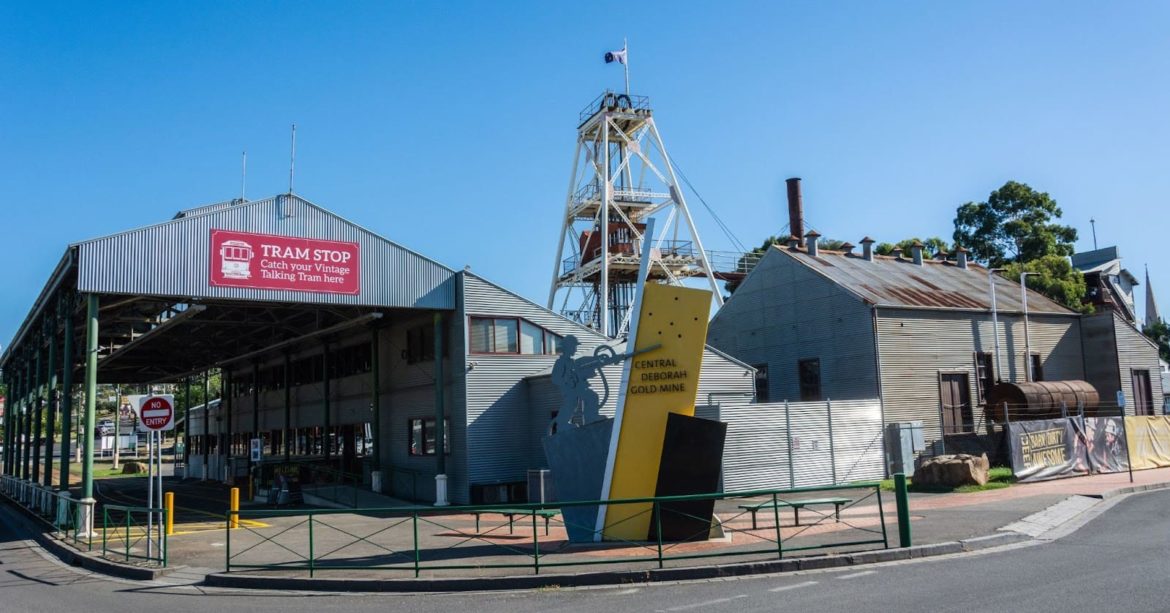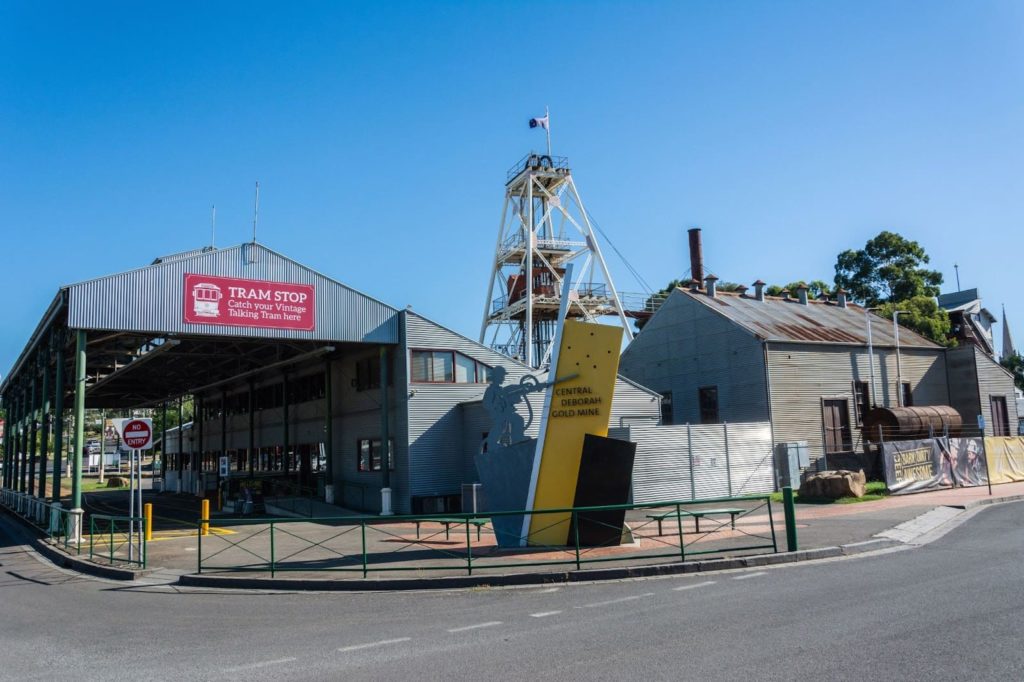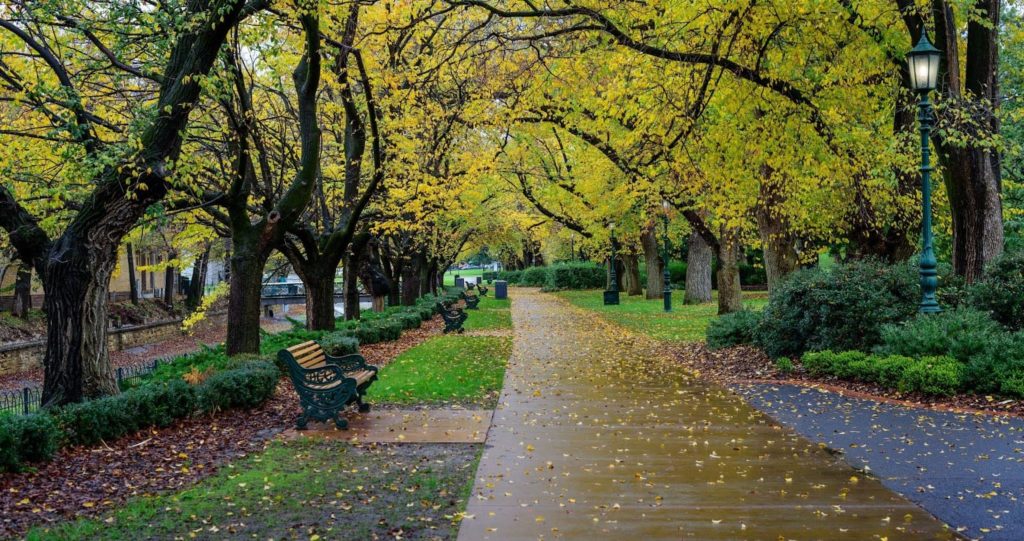The Mining History of Bendigo
The city of Bendigo has a history that began with the discovery of gold in the area in the 1850s. At the time of the discovery the location was part of the Ravenswood or Mt Alexander pastoral run.
Gold was discovered by two women who were washing clothes in Bendigo Creek, in 1851. This event led to an influx of people and the creation of a growing settlement. The influence of that time is still present in the city today. Tourists can visit attractions like the Deborah Gold Mine and look back through time. To fully understand the fascination with the history of mining in Bendigo, it helps to start at the beginning.
Key points
- The city of Bendigo has a history that began with the discovery of gold in the area in the 1850s.
- Alluvial gold was discovered by two women who were washing clothes in Bendigo Creek, in 1851. This event led to an influx of people and the creation of a growing settlement.
- By the time of the 1854 census there were nearly 15,500 living in the settlement. This growth in population led to the planning of the original Bendigo township.
- The mining industry in Bendigo began to decline early in the 20th century and other industries came to the forefront. Today, the mining industry is part of the history of Bendigo and its relics are major tourist attractions.
Discovery of gold in Bendigo
There was already a creek named Bendigo prior to the discovery of gold in the area in the 19th century. It is thought to be named after famous bare knuckle boxer William Abednego Thompson whose nickname was Bendigo.
The name is said to have been given to the creek in 1848. Three years later, at the start of the Australian Gold Rush in Central Victoria, gold was discovered by the wives of two pastoral workers as they washed clothes in the creek.
This discovery led to significant growth of the population as 15,000 people moved to the area over the next three years in the hope of finding gold.
Growth of Bendigo township
The people who came to the early Bendigo township after gold was discovered were of several different nationalities including Welsh, Irish, Scottish, German, American, and Chinese. They were the individuals who created the early mining history of Bendigo.
By the time of the 1854 census there were nearly 15,500 people living in the settlement. At this point, there was a haphazard collection of buildings including boarding houses, stores, and personal homes.
Due to the growing need for a set infrastructure, a town was laid out. It was named Sandhurst on the recommendation of Goldfields Commissioner, W.H. Wright. The commissioner had attended Sandhurst College in England. The new name for the area had been approved by Lieutenant-Governor La Trobe.
The gold yields in and around Bendigo at this time were impressive. They were often at least 400,000 ounces per year. By 1858, the population had reached 28,928, and the gold yield for the year was 447,212 ounces.
At this point a railway line began operating, starting at Melbourne. The line reached Sandhurst (Bendigo) in 1862.
By 1865, Sandhurst was a thriving town with a hospital, museum, theatre, newspaper publishers, foundries, breweries, and more than 50 hotels including The Shamrock. Many of these buildings were designed by Germans William Vahland and Jacob Getzschmann who had been unsuccessful at mining and formed an architectural design partnership instead.
Miners were highly active in the area. There were poppet mines across the landscape and the air was thick with dust from the mining activities.
The late 19th century saw Sandhurst (Bendigo) become a rail hub and trams also began operating in the township. Reservoirs were built to keep up with the demand for water. A major event during this period of the history of the township was its renaming back to Bendigo, in 1896.
That same year, a trades and labour council was formed. This had an impact on labour relations in the coming years as the mining industry continued to thrive with underground reef mining now producing around 200 ounces of gold annually.
Decline of mining in Bendigo
As the 20th century began, Bendigo’s mining history took a turn for the worse. More than 1,000 men had died of illnesses such as phthisis and tuberculosis between 1875 and 1905. This was not the only issue. By 1917, gold production was only 25% of what it had been in 1904 so the ongoing decline was obvious. Dividends from gold were also only around 2% of what they were in 1904.
As a result of this downturn, investment in gold mining was withdrawn. This affected Bendigo more than larger goldfield areas like Ballarat. The population of the town decreased from 30,774 to 17,883 between 1901 and 1911.
This led to the town changing its emphasis to other areas of employment and production such as the railways, tramways, and a local soft drinks factory. During the 1920s, the population of the town gradually began to grow again. Today, this population is 121,382 and Bendigo is a city that is popular with tourists who are keen to know more about its mining history.
Bendigo’s mining history now a tourist attraction
After the war years, in the mid-20th century, Bendigo had a strong manufacturing and production base. This situation began to change between 1966 and 1991 as manufacturing jobs went into decline. These jobs were replaced by roles in finance, business, wholesale, and property.
Tourism is also a major force in the financial landscape of modern-day Bendigo. The landscape has been cleaned up from the days when mining was in full operation. Now, the city has tree-lined streets and a botanic garden to make it a more attractive proposition for tourists.
However, the clean-up does not mean the city has detached itself from its history of mining. It now uses this history as a central focus of its tourism industry. Relics of the mining history of Bendigo that are now popular tourist attractions include Central Deborah Gold Mine which was one of over 5,500 registered gold mines across the goldfields of Bendigo when it was operating.
Visitors can also visit the Rosalind Park Poppet Head. This used to be part of the Garden Gully United mine. Now, it’s a lookout point on top of Camp Hill. This is the perfect place for tourists to get a view of this city that was built on a proud history of mining.



